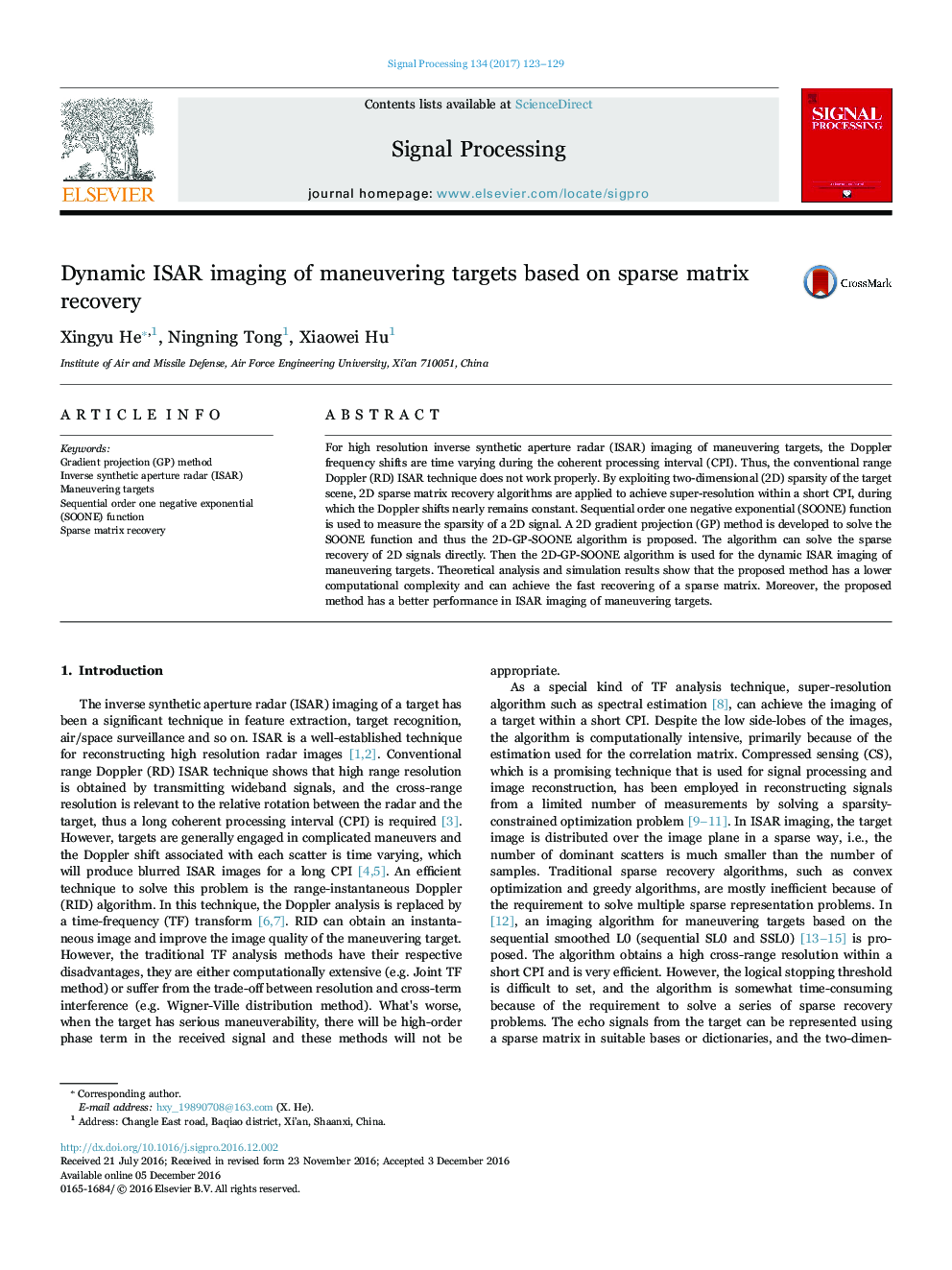| کد مقاله | کد نشریه | سال انتشار | مقاله انگلیسی | نسخه تمام متن |
|---|---|---|---|---|
| 4977743 | 1451933 | 2017 | 7 صفحه PDF | دانلود رایگان |

- Exploit 2D sparsity of the target scene, sparse matrix recovery method can be used.
- We use the SOONE function to measure the sparsity of a 2D signal.
- A novel 2D-GP-SOONE algorithm is proposed to achieve the sparse matrix recovery.
- Use the 2D-GP-SOONE algorithm to achieve the ISAR imaging of maneuvering targets.
For high resolution inverse synthetic aperture radar (ISAR) imaging of maneuvering targets, the Doppler frequency shifts are time varying during the coherent processing interval (CPI). Thus, the conventional range Doppler (RD) ISAR technique does not work properly. By exploiting two-dimensional (2D) sparsity of the target scene, 2D sparse matrix recovery algorithms are applied to achieve super-resolution within a short CPI, during which the Doppler shifts nearly remains constant. Sequential order one negative exponential (SOONE) function is used to measure the sparsity of a 2D signal. A 2D gradient projection (GP) method is developed to solve the SOONE function and thus the 2D-GP-SOONE algorithm is proposed. The algorithm can solve the sparse recovery of 2D signals directly. Then the 2D-GP-SOONE algorithm is used for the dynamic ISAR imaging of maneuvering targets. Theoretical analysis and simulation results show that the proposed method has a lower computational complexity and can achieve the fast recovering of a sparse matrix. Moreover, the proposed method has a better performance in ISAR imaging of maneuvering targets.
Journal: Signal Processing - Volume 134, May 2017, Pages 123-129